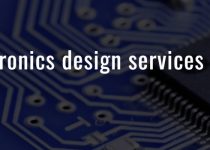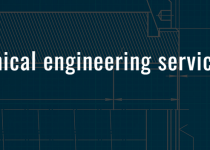How Brushless DC Motors Are Transforming the Automotive Industry in 2024

The automotive industry is undergoing a significant transformation, thanks in large part to the advancement of electric motor technologies. Among these, brushless DC motors have emerged as a pivotal innovation, reshaping how vehicles are designed, built, and operated. In 2024, these motors are not just a component of the industry’s electrification trend but a cornerstone technology that promises efficiency, sustainability, and a new era of automotive engineering.
Understanding Brushless DC Motors
Before diving into their impact on the automotive industry, it’s essential to understand what brushless DC motors (BLDC motors) are and how they differ from their brushed counterparts. Unlike traditional brushed motors, BLDC motors do not contain brushes used for commutation. Instead, they use an electronic controller to continuously switch the phase to the windings, which keeps the motor running. This key difference leads to several benefits, including increased efficiency, longer life spans, and reduced maintenance costs.
Key Benefits of Brushless DC Motors
- Higher Efficiency: BLDC motors convert electricity to mechanical power more efficiently, which is crucial for extending the driving range of electric vehicles (EVs).
- Longer Lifespan: Without brushes, these motors experience less wear and tear, leading to a longer operational life.
- Less Maintenance: The absence of brushes eliminates many common causes of motor failure, reducing the overall maintenance burden.
- Quiet Operation: Brushless motors operate more quietly, enhancing the comfort level inside the vehicle.
Impact on the Automotive Industry
The adoption of brushless DC motors in the automotive sector is not just a trend but a transformation. Here’s how they are making a significant impact:
Enhancing Electric Vehicle Performance and Range
One of the primary advantages of brushless DC motors is their ability to improve the performance and extend the range of electric vehicles. This is particularly important as the demand for EVs continues to grow, fueled by the global push for cleaner, more sustainable transportation options. By maximizing the efficiency of the motor, manufacturers can ensure that the vehicle uses power more judiciously, thereby increasing the distance an EV can travel on a single charge.
Facilitating Better Vehicle Designs
Brushless DC motors are compact and offer high torque at low speeds, which is ideal for the automotive industry. This allows designers more flexibility in terms of vehicle layout and weight distribution, enabling them to optimize other aspects of the vehicle’s performance, such as handling and stability.
Reducing Manufacturing and Maintenance Costs
The reliability and efficiency of brushless DC motors reduce both the initial manufacturing costs and the ongoing maintenance expenses. Fewer moving parts mean there are fewer components that could fail, which not only enhances the vehicle’s reliability but also reduces the frequency and cost of repairs. This is particularly appealing to automotive manufacturers looking to offer longer warranties and reduce after-sales service costs.
Supporting Autonomous Driving Technologies
Autonomous vehicles rely heavily on the precision control of their drive mechanisms. Brushless DC motors provide the necessary control and responsiveness required by self-driving systems, making them an integral part of the autonomous vehicle ecosystem. Their ability to operate efficiently across a range of speeds and conditions helps improve the safety and reliability of autonomous vehicles.
Contributing to Sustainability
Finally, the inherent efficiency and durability of brushless DC motors contribute directly to the sustainability goals of the automotive industry. By reducing the energy consumption and the need for frequent replacements, these motors help decrease the overall environmental footprint of vehicles.
Challenges and Future Directions
Despite their many benefits, the integration of brushless DC motors into automotive applications is not without challenges. Issues such as cost, electronic control complexity, and the need for specialized manufacturing processes must be addressed to fully realize their potential. However, ongoing advancements in semiconductor technology, power electronics, and material science are continuously mitigating these challenges.
Conclusion
As we move further into 2024, brushless DC motors are set to play an even more critical role in the automotive industry. With their ability to enhance vehicle efficiency, design flexibility, and overall sustainability, they are not just transforming how vehicles are made but also how they are perceived and used globally. As technology continues to evolve, the future of automotive engineering looks increasingly electric, with brushless DC motors at the forefront of this revolution. For manufacturers and consumers alike, embracing this technology will be key to navigating the roads of tomorrow.
Incorporating these motors into your vehicle designs not only aligns with global trends toward electrification and sustainability but also positions products at the cutting edge of automotive technology. As we look to a future dominated by electric and autonomous vehicles, brushless DC motors are undoubtedly leading the charge.
--------------------------------
Guestbeat.com Notice!
Audience discretion is needed, Read TOS.
Submit Guest Post / Read Latest / Category List
App & Rate-Us / Subscribe Daily Newsletter (FREE)



